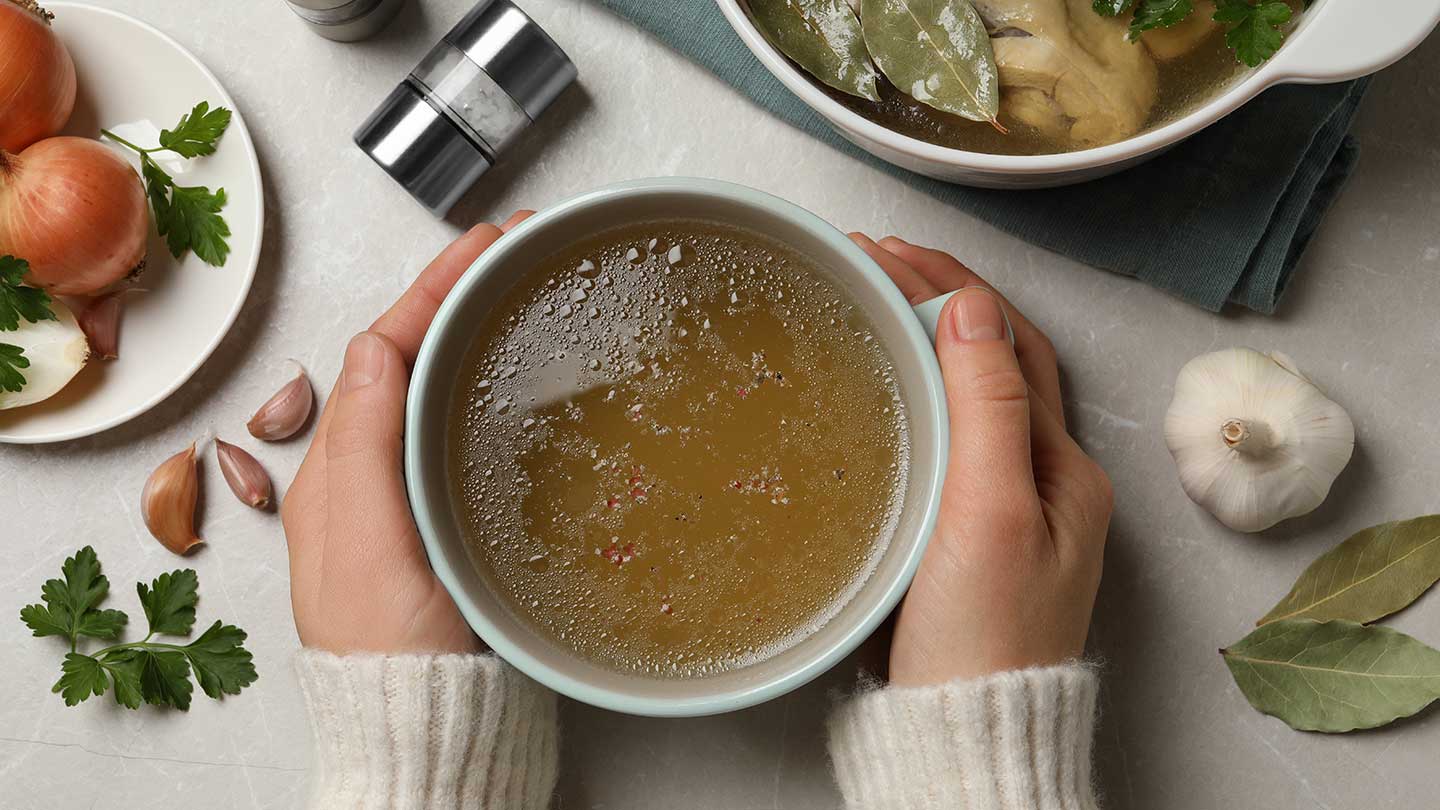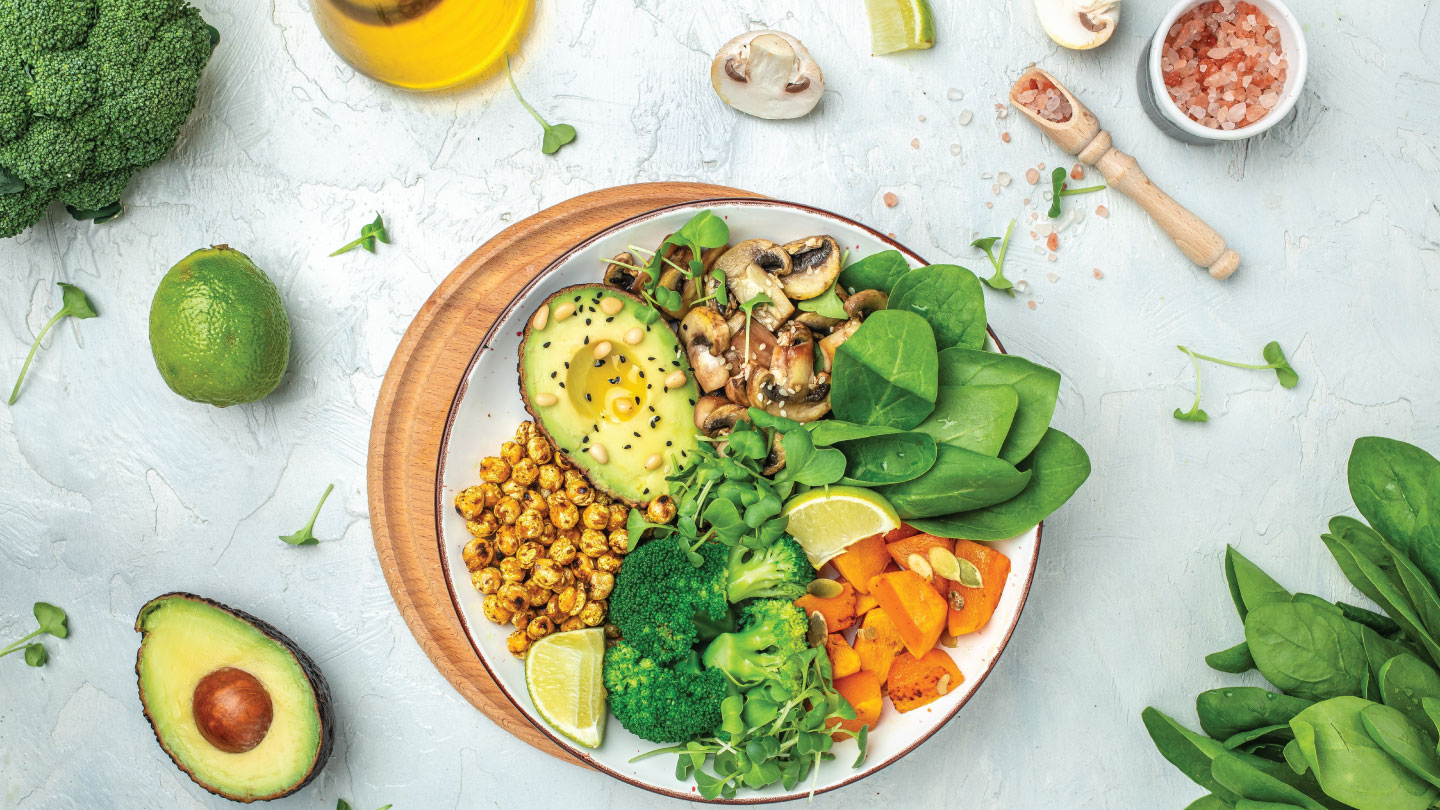Nutrition
5 Ways To Enrich Food With Umami
Want to infuse your culinary creations with that craved umami richness? Look no further! Discover the simplicity of enhancing your cooking prowess with our expert tips, promising a symphony of flavours in every bite.

Ever noticed how a delightful meal has the magical ability to put a smile on your face? Whether it's the end of a hectic day or a moment of celebration, there's something truly blissful about indulging in a flavourful feast. That's the magic of umami – the fifth taste sensation that adds depth and richness to your dishes, making every bite an unforgettable experience.
Get instant access to personalised nutrition advice just for you. Sign up here.
Umami— A Synonym For ‘Deliciousness’
Umami, often referred to as the fifth taste alongside sweet, sour, salty, and bitter, holds a unique place in the realm of culinary delights. Originating from the Japanese word meaning "pleasant savoury taste," umami adds a depth and richness to dishes that tantalise the taste buds and leave a lasting impression. Umami stands as one of the fundamental tastes, alongside sweet, sour, bitter, and salty. What sets it apart is its distinctiveness—it lingers on the palate, fills the mouth with its rich essence, and uniquely evokes both appetite and satiety.
According to a 2018 report issued in the EXCLI Journal Experimental And Clinical Sciences, when umami hits your taste buds, what they're sensing is glutamate. Glutamate, an amino acid naturally produced in the body, is prevalent in a variety of foods. High-protein sources like meats, mushrooms, cheese, and tomato sauce are among the staple ingredients rich in its molecules.
Related story: DASH Diet: All You Need To Know
Ever heard of MSG (monosodium glutamate)? Surprisingly, it's not as villainous as it's often portrayed, unless, of course, you're spooning it down. But fear not; MSG represents just one form of glutamate, distinct in taste and function. In reality, MSG serves as a "taste enhancer," magnifying the umami essence of food. It can effectively elevate flavours in sauces, salad dressings, and soups without compromising taste or health. MSG has been linked to various health concerns such as anxiety, headaches, weight gain, and metabolic disorders. This is due to the fact that glutamate, a component of MSG, acts as an excitatory neurotransmitter. In other words, it stimulates the nervous system, leading to increased alertness and activity.
But, according to a report published in 2018 in the Annals of Nutrition and Metabolism, dietary glutamate doesn't breach the blood-brain barrier. Consequently, it doesn't lead to an increase in glutamate levels within the brain. Which means it is safe to use when consumed in limit.
Amidst the hustle and bustle of life, savouring each bite enriched with umami goodness can elevate your culinary experience to new heights. But don’t worry, for enhancing your cooking with umami is far simpler than you might imagine.
Related story: The Science of Indian Food
Incorporating Umami-Rich Foods in Diet
Umami-rich ingredients are the foundation of savoury and satisfying dishes across culinary traditions. Among the key players in the umami game are garlic, kimchi, onions, tomatoes, soy sauce, and a variety of other flavour-packed ingredients.
- Onions: Onions are not only a staple ingredient in many dishes but also a rich source of umami flavour. When sautéed or caramelised, they develop a deep, savoury taste that adds complexity to soups, stews, sauces, and stir-fries.
- Garlic: Like onions, garlic is another aromatic ingredient that contributes to the umami profile of dishes. Its pungent and savoury flavour intensifies when roasted or minced, enhancing the taste of sauces, marinades, and roasted vegetables.
- Asafoetida (Hing): Asafoetida, a spice commonly used in Indian cuisine, has a strong and savoury aroma reminiscent of onion and garlic. Often added to lentil dishes, curries, and vegetable stir-fries, it imparts a distinctive umami flavour to the final dish.
- Vegetable Stock: Vegetable stock, made from simmering a combination of vegetables, herbs, and aromatics, is a versatile ingredient that adds depth and richness to soups, sauces, and risottos. Its umami-rich profile enhances the overall flavour of vegetarian and vegan dishes.
- Miso: Miso, a traditional Japanese seasoning made from fermented soybeans, is prized for its complex umami flavour. Used in soups, marinades, glazes, and dressings, miso adds depth and richness to dishes while providing a subtle tangy-salty taste.
- Kimchi: Kimchi, a staple in Korean cuisine, is a fermented vegetable dish typically made with cabbage, radishes, and spices. Its tangy, spicy, and umami-rich flavour profile makes it a versatile ingredient for adding depth to stir-fries, rice dishes, and soups.
- Green Tea: While commonly known for its health benefits, green tea also contains naturally occurring umami compounds. In culinary applications, brewed green tea can be used to infuse savoury dishes like broths, marinades, and sauces with a subtle umami undertone.
Related story: Powerful Food Combinations For Better Health
Versatility of Umami Flavours
One of the remarkable qualities of umami-rich ingredients is their versatility across different culinary traditions. From Italian to Japanese cuisine, these ingredients play a central role in enhancing flavour and creating signature dishes.
- Italian Cuisine: In Italian cooking, ingredients like tomatoes, mushrooms, and Parmesan cheese are prized for their ability to add depth and richness to classic dishes such as spaghetti bolognese, mushroom risotto, and Margherita pizza.
- Asian Cuisine: Soy sauce, mushrooms, and fermented ingredients like miso and kimchi are integral to the umami-rich flavour profile of Asian dishes. From Japanese miso soup and teriyaki chicken to Korean kimchi fried rice and Chinese stir-fries, umami ingredients form the backbone of many Asian culinary creations.
- Global Fusion: In today's culinary landscape, chefs are increasingly embracing umami-rich ingredients to create innovative fusion dishes that draw inspiration from diverse culinary traditions. Whether it's a umami-infused burger topped with mushrooms and melted cheese or a tomato-based curry infused with Indian spices, the possibilities for creative experimentation are endless.
Related story: 10 Food Rules That Are Outdated
5 Ways To Experiment With Umami Flavours
Incorporating these umami-rich ingredients into your cooking repertoire can elevate the taste of your dishes, adding depth and complexity that will leave your taste buds craving more. Whether you're preparing a hearty stew, a comforting soup, or a flavourful stir-fry, experimenting with these ingredients will unlock new dimensions of culinary delight.
1. Layer Umami-Rich Ingredients: Experiment with layering umami-rich ingredients throughout your dishes to build depth of flavour. Start with a base of sautéed onions and garlic, then add ingredients like mushrooms, tomatoes, or soy sauce to enhance the umami profile. By incorporating these ingredients at different stages of cooking, you can create complex and satisfying flavours.
2. Explore Fermented Foods: Incorporate fermented foods such as miso, kimchi, and fermented soybeans into your cooking to introduce a tangy and savoury umami taste. These fermented ingredients not only add depth of flavour but also provide beneficial probiotics for gut health. Try using miso paste in soups, marinating meats with soy sauce, or adding kimchi to rice dishes for a burst of umami goodness.
3. Utilise Umami-Enhancing Condiments: Experiment with umami-enhancing condiments like fish sauce, Worcestershire sauce, and nutritional yeast to amplify the savoury taste of your dishes. These condiments are packed with umami compounds that can enhance the overall flavour profile of soups, stews, sauces, and marinades. Start by adding a splash of fish sauce to stir-fries, Worcestershire sauce to gravies, or nutritional yeast to popcorn for an extra umami kick.
4. Try Different Cooking Techniques: Explore different cooking techniques such as roasting, caramelising, and searing to bring out the natural umami flavours in ingredients. Roasting vegetables at high heat caramelises their sugars, intensifying their savoury taste. Similarly, searing meats creates a browned crust that adds depth and richness to dishes. Experiment with these techniques to enhance the umami profile of your favourite ingredients.
5. Balance Umami with Other Flavours: Experiment with balancing umami flavours with other taste sensations such as sweet, sour, salty, and bitter. By incorporating complementary flavours, you can create well-rounded dishes that are not only delicious but also perfectly balanced. For example, pair umami-rich ingredients like soy sauce or mushrooms with sweet ingredients like honey or caramelised onions, or balance the richness of miso with the acidity of vinegar or citrus. Experimenting with different flavour combinations will help you create harmonious and satisfying dishes that tantalise the taste buds.
In cooking, umami plays a crucial role in enhancing the overall flavour profile of a dish, creating a sense of satisfaction and completeness that goes beyond mere taste. It is the secret ingredient that brings harmony to a meal, tying together disparate flavours into a cohesive and memorable experience. Yet, despite its widespread recognition, umami remains a mystery to many home cooks. Its significance is often overlooked or underestimated, leading to missed opportunities for culinary exploration and innovation. This is where experimentation with umami flavours becomes paramount.
Get instant access to personalised nutrition advice just for you. Sign up here.
EXPLORE MORE
If you’re on a GLP-1, your diet can make or break your health journey. Here’s your guide to avoid common pitfalls.
Bright, tangy, and naturally refreshing, this orange chutney offers a burst of citrusy sweetness with a gentle hint of spice. It’s the perfect accompaniment to elevate daily meals with freshness and depth.
What you eat matters, but how you pair it matters even more. Transform simple meals into nutrient powerhouses.
Fibremaxxing is everywhere on social media but is doubling down on fibre really the secret to better gut health, or can one overdo it?







.jpg)

.jpg)
